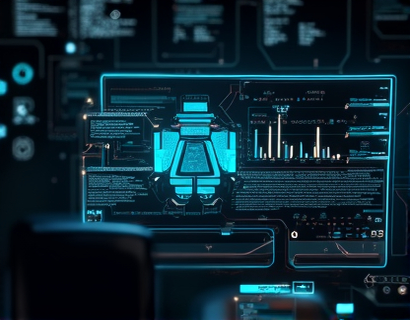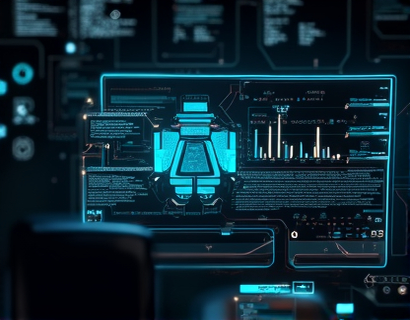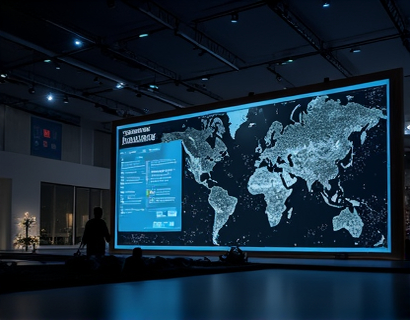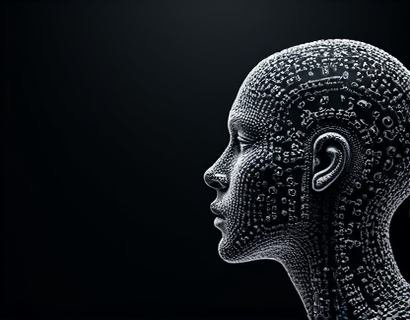AI-Driven Urban Insights: Transforming Urban Living Through Verified Chat Platforms
In the rapidly evolving landscape of urban development, the integration of artificial intelligence (AI) is revolutionizing the way cities function and grow. An innovative AI-powered chat platform has emerged, offering specialized insights into smart city services and industry trends. This platform is now available in an educational and child-friendly version, ensuring that the information provided is not only accurate but also safe and suitable for young learners and educators. This article delves into the capabilities and benefits of such a platform, highlighting its role in fostering smart living and sustainable development.
The Need for AI-Driven Urban Insights
The challenges faced by modern cities are complex and multifaceted, ranging from traffic congestion and pollution to housing shortages and resource management. Traditional methods of addressing these issues often fall short due to the sheer volume of data and the need for real-time, actionable insights. AI-driven chat platforms bridge this gap by providing urban innovators, educators, and policymakers with timely and verified information. These platforms leverage machine learning algorithms to analyze vast datasets, extract meaningful patterns, and offer insights that can inform decision-making processes.
Specialized Insights for Urban Innovators
For urban innovators, access to specialized insights is crucial for developing and implementing cutting-edge solutions. The AI chat platform offers a range of features designed to support this community. Users can engage in conversations with the AI to gain a deeper understanding of smart city technologies, such as IoT devices, data analytics, and sustainable energy solutions. The platform can provide case studies, best practices, and emerging trends, helping innovators stay ahead of the curve. Additionally, the AI can assist in identifying potential collaboration opportunities and resources, fostering a collaborative ecosystem for urban innovation.
Educational Value for Educators and Students
The educational version of the chat platform is tailored to meet the needs of educators and students. It ensures that the information provided is accurate, up-to-date, and presented in a way that is accessible and engaging for young minds. Educators can use the platform to enhance their curriculum, incorporating real-world examples and current industry trends into their lessons. Students, on the other hand, can explore topics related to urban planning, environmental sustainability, and technology in a safe and controlled environment. The platform can also facilitate interactive learning experiences, such as quizzes, simulations, and project ideas, making complex concepts more tangible and understandable.
Content Verification and Safety
One of the key features of this AI chat platform is its commitment to content verification. In an era where misinformation can spread rapidly, ensuring the accuracy of information is paramount. The platform employs rigorous verification processes to validate the data and insights provided. This includes cross-referencing information from trusted sources, peer-reviewed research, and official reports. For the educational version, the content is further curated to meet educational standards and safety guidelines, making it suitable for children and students. The platform also includes parental controls and monitoring tools to ensure a secure and appropriate learning environment.
Child-Friendly Interface and Educational Content
The child-friendly version of the chat platform is designed with a focus on safety and educational value. The interface is intuitive and visually appealing, with a color scheme and design elements that engage young users. The language used is simple and clear, avoiding jargon and technical terms that might be confusing. Topics are presented in a way that sparks curiosity and encourages exploration. For example, a child might ask about renewable energy, and the AI could respond with an explanation of solar power, its benefits, and real-world applications, complete with illustrations and fun facts.
Educators can leverage the platform to create lesson plans and activities that align with educational standards. The platform provides a wealth of resources, including articles, videos, and interactive modules, all carefully selected to support learning objectives. Teachers can also use the platform to answer student questions in real-time, providing immediate feedback and guidance. This interactive approach not only enhances learning but also helps build a deeper understanding of complex subjects.
Fostering Sustainable Urban Development
The ultimate goal of the AI chat platform is to contribute to sustainable urban development. By providing insights into smart city services and industry trends, the platform helps stakeholders make informed decisions that prioritize environmental sustainability, social equity, and economic viability. For instance, the AI can offer recommendations on how to reduce urban carbon footprints, improve public transportation systems, and enhance green spaces. These insights can be invaluable for city planners, policymakers, and community leaders who are tasked with creating livable and sustainable urban environments.
Moreover, the platform can facilitate public engagement by providing a platform for citizens to voice their concerns and suggestions. Through interactive chat sessions, residents can discuss local issues and collaborate with experts to find solutions. This democratization of information and decision-making processes empowers communities and fosters a sense of ownership and responsibility towards urban development.
Case Studies and Real-World Applications
To illustrate the practical applications of the AI chat platform, consider a few case studies. In a bustling metropolis, city planners used the platform to explore strategies for reducing traffic congestion. The AI analyzed traffic patterns, public transportation data, and urban layout, providing recommendations such as optimizing traffic signal timings, expanding bike lanes, and improving pedestrian walkways. These insights led to a comprehensive plan that not only reduced congestion but also promoted a healthier, more active lifestyle for residents.
In another scenario, an educational institution integrated the chat platform into its curriculum. Students engaged in a project to design a sustainable neighborhood, using the AI to research and incorporate best practices in renewable energy, water management, and waste reduction. The platform provided real-time feedback and resources, guiding the students through the design process and helping them develop a well-rounded understanding of sustainable urban planning.
Challenges and Future Directions
While the AI chat platform offers significant benefits, there are challenges to consider. One key challenge is ensuring the continuous accuracy and relevance of the information provided. As urban landscapes and technologies evolve, the platform must adapt and update its knowledge base regularly. This requires a robust system for data collection, analysis, and content updates. Additionally, there is a need to address the digital divide, ensuring that all communities, regardless of their technological access, can benefit from the platform's resources.
Looking ahead, the platform could expand its capabilities by integrating more advanced AI features, such as predictive analytics and personalized recommendations. For example, the AI could predict potential urban challenges based on current trends and suggest proactive measures. Personalized recommendations could tailor the information and resources to the specific needs and interests of individual users, enhancing the overall user experience.
Conclusion
The AI-driven chat platform represents a significant step forward in urban innovation and sustainable development. By providing verified, specialized insights and an educational version for young learners, the platform empowers a wide range of stakeholders to contribute to smarter, more sustainable cities. As urban challenges continue to grow in complexity, tools like this will be essential in driving innovation and fostering a collaborative approach to urban planning. The future of urban living is bright, and platforms like this will play a crucial role in shaping it.











































